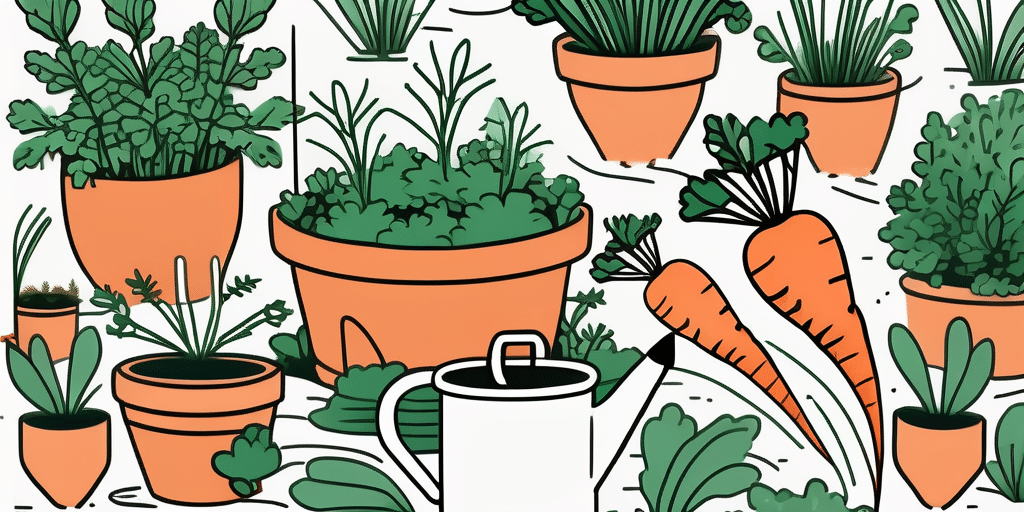Carrots, with their vibrant color and crisp texture, are a staple in many kitchens. However, to keep them fresh and nutritious, proper storage and preservation techniques are essential. Let’s delve into the best ways to store and preserve carrots for long-term use.
Understanding Carrots and Their Storage Needs
Carrots are root vegetables, which means they continue to breathe after they’ve been harvested. This process, known as respiration, can lead to moisture loss, resulting in limp and unappetizing carrots. Therefore, controlling the environment in which carrots are stored is key to maintaining their freshness.
According to the United States Department of Agriculture (USDA), carrots should ideally be stored in a cool, humid, and dark environment. This helps slow down the respiration process and prolongs the shelf life of the vegetable.
Temperature for Storing Carrots
The USDA recommends storing carrots at a temperature between 32°F and 40°F. This is typically the temperature range of most refrigerators. Storing carrots at this temperature helps to slow down the respiration process and keeps them fresh for longer.
However, it’s important to note that temperatures below 32°F can cause carrots to freeze, which can damage their texture and taste. On the other hand, temperatures above 40°F can speed up the respiration process, leading to quicker spoilage.
Humidity for Storing Carrots
Carrots require a high humidity level of about 95% to maintain their crispness. This can be achieved by storing them in the crisper drawer of your refrigerator, which is designed to maintain a higher humidity level than the rest of the fridge.
Alternatively, you can store carrots in a container filled with water. However, the water needs to be changed every few days to prevent bacterial growth. Also, this method is not suitable for long-term storage as it can lead to the carrots becoming waterlogged over time.
How to Store Carrots
- Remove any green tops from the carrots. These can draw moisture away from the carrot, causing it to become limp.
- Do not wash the carrots before storing them. Moisture can encourage the growth of mold and bacteria.
- Place the carrots in a plastic bag or airtight container. If using a bag, make sure to poke a few holes in it to allow for air circulation.
- Store the carrots in the crisper drawer of your refrigerator.
- Check the carrots regularly and remove any that show signs of spoilage to prevent it from spreading to the rest.
How to Preserve Carrots
While proper storage can keep carrots fresh for several weeks, preservation methods like canning, freezing, and dehydrating can extend their shelf life for up to a year or more.
Canning Carrots
Canning is a preservation method that involves placing foods in jars and heating them to a temperature that destroys micro-organisms that cause food to spoil. According to the National Center for Home Food Preservation, carrots should be pressure canned for safety due to their low acidity.
- Wash and peel the carrots.
- Cut them into slices or leave them whole, depending on your preference.
- Blanch the carrots in boiling water for 5 minutes.
- Pack the blanched carrots into jars, leaving 1 inch of headspace.
- Fill the jars with boiling water, maintaining the 1-inch headspace.
- Wipe the rims of the jars, place the lids on, and screw on the bands until fingertip tight.
- Process the jars in a pressure canner according to the manufacturer’s instructions.
Freezing Carrots
Freezing is another effective way to preserve carrots. The University of Nebraska-Lincoln Extension recommends blanching carrots before freezing to ensure quality and safety.
- Wash, peel, and cut the carrots into slices or sticks.
- Blanch the carrots in boiling water for 2 minutes.
- Immediately cool the carrots in ice water to stop the cooking process.
- Drain the carrots and pack them into freezer-safe bags or containers.
- Remove as much air as possible from the bags or containers before sealing them.
- Label the bags or containers with the date and store them in the freezer.
Dehydrating Carrots
Dehydrating is a preservation method that removes water from food, preventing the growth of bacteria, yeasts, and molds. The University of Georgia Extension suggests that dehydrated carrots can be used in soups, stews, and other cooked dishes.
- Wash, peel, and slice the carrots.
- Blanch the carrot slices in boiling water for 2 minutes.
- Drain the carrots and spread them out on dehydrator trays.
- Dehydrate the carrots at 125°F for 6 to 10 hours, or until they are brittle.
- Store the dehydrated carrots in airtight containers in a cool, dark place.
Conclusion
Proper storage and preservation of carrots can help maintain their freshness, nutritional value, and taste. Whether you choose to store them in the refrigerator, can them, freeze them, or dehydrate them, following the right techniques is key to preventing spoilage and ensuring you have a supply of carrots ready for use whenever you need them.
Keep Your Carrots and Garden Thriving
Now that you know how to store and preserve your carrots, why not take your gardening skills to the next level? Subscribe for free to How to Grow Everything and learn how to build the garden of your dreams! Receive personalized gardening advice tailored to your grow zone and experience level. Enjoy the best gardening tips, special offers, and deals delivered straight to your inbox—no spam, just valuable insights from our family to yours. Join our community and watch your garden flourish!

